Recognizing Anaphylaxis Shock

Anaphylaxis, also called allergic or anaphylactic shock, is a sudden, severe and life-threatening allergic reaction that involves the whole body. Symptoms of anaphylaxis can vary but typically involve multiple systems in the body.
Common symptoms include:
- Skin Reactions: Hives, itching, and flushed or pale skin.
- Respiratory Problems: Swelling of the throat and tongue, causing difficulty breathing, wheezing, or a tight feeling in the chest.
- Gastrointestinal Issues: Nausea, vomiting, diarrhea, and abdominal pain.
- Circulatory Symptoms: A rapid or weak pulse, low blood pressure, and dizziness or fainting.
- Neurological Signs: Anxiety, confusion, and a sense of impending doom.
Emergency Response for Anaphylaxis
- Call for Help: Dial emergency services immediately. Anaphylaxis is a medical emergency that requires prompt attention.
- Administer Epinephrine: If the person has an epinephrine auto-injector (EpiPen), use it right away. Inject it into the outer thigh muscle. This can slow down or stop the reaction temporarily, buying crucial time for emergency responders to arrive.
- Position the Person Properly: Lay the person flat on their back. Elevate their legs to improve blood flow. If they are having trouble breathing, help them sit up slightly. Avoid sudden movements.
- Monitor Their Condition: Stay with the person and monitor their breathing and heart rate. If they become unconscious and are not breathing, begin CPR if you are trained to do so.
- Secondary Dose: If symptoms do not improve within 5-15 minutes and emergency responders have not yet arrived, a second dose of epinephrine may be administered if available and recommended.
- Avoid Allergens: Identify and remove the source of the allergen if possible. For example, if the reaction is due to a bee sting, carefully remove the stinger by scraping it with a flat object.
After the Reaction
Even if symptoms appear to subside after administering epinephrine, the person must still go to the hospital. Anaphylaxis can have a biphasic reaction, where symptoms return after a few hours. Medical professionals can provide the necessary care and monitor for further reactions.
Conclusion
Anaphylaxis is a critical condition that demands swift and effective action. Understanding the triggers, recognizing the symptoms, and knowing the appropriate emergency response can prevent fatalities. Education and awareness are essential, especially for those with known allergies. Carrying an epinephrine auto-injector and having an action plan can make a life-saving difference in an anaphylactic emergency.
Our WSIB approved Standard First Aid Training addresses Medical Emergencies, including signs and symptoms of Anaphylaxis Shock along with First Aid Treatment.

Kathryn Davies
President Owner


Leave a Reply
You must be logged in to post a comment.